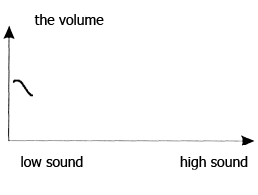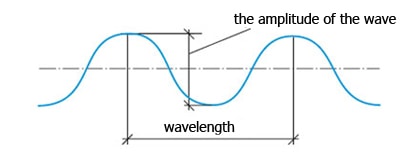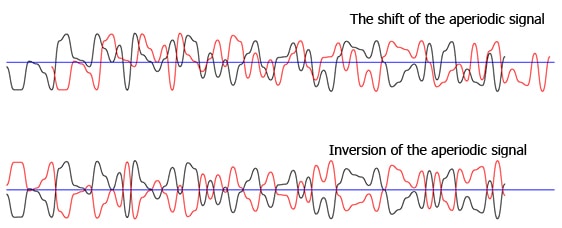The contents
- Introduction
- 1. Relevance
- 2. The goals and objectives of the research
- 3. Overview of research and development
- 3.1 International developments
- 3.2 Review of local sources
- 4. Sound performance
- 5. Analysis of methods of digital processing of digital signals and methods of active noise control
- 6. Algorithms for sound suppression
- Conclusions
- References
Introduction
Noise — irregular fluctuations of various physical nature, different complexity of the temporal and spectral structure. Initially the buzz word belonged exclusively to sound, but in modern science it has been extended to other types of waves (radio, electricity).
Noise sound range slows human reaction coming from technical devices signals, this leads to a decrease in attention and increase errors when performing various types of work. Because of the noise people can not properly rest and recuperate. Noise depresses the Central nervous system (CNS) causes a change in the rate of respiration and heart rate, contributes to metabolic disorders, the emergence cardiovascular disease, gastric ulcer, hypertension. Any noise of sufficient intensity and duration may cause varying degrees of reduction in auditory activity. When exposed to high noise levels (over 140 dB) possible rupture of eardrums, concussion, and at even higher (more than 160 dB) is death. [1].
1. The relevance of the topic
Currently, the noise will surround us everywhere: in the enterprise, on the streets, at home. Methods to combat it are divided into two types: active and passive. Passive set the passive obstacle signal. So, for example, Windows are a passive method of noise reduction or such remedies from loud noise like headphones with rubber rings or foam earplugs.
In contrast to passive methods of noise cancellation, active methods work according to the scheme: measurement noise, processing, results in the playback system, causing the noise added to the inverted noise is suppressed.
The advantage of active systems is that they are able to suppress the noise in the same environment in which the person is, for example, to suppress the noise of the fridge or close the system unit. Typically, filters of the active noise reduction systems are more effective. Therefore, the building and the use of such systems will always be true.
2. The purpose and research tasks, planned results
The aim of this work is to study the effectiveness of various structures and algorithms systems active noise cancellation. To develop methods for studying the algorithms that will be used in the system unit of a personal computer (including sound card), speakers and microphone.
The research object of this work is the active noise reduction system. Its practical value lies in the fact that suppressing the level of noise in the room, you can achieve internal harmony of the body, reduce irritability and improve concentration for long work or a pleasant holiday.
3.Overview of research and development
The problem of reducing acoustic pollution is a global problem. The range of problems associated with acoustics (science of sound) is huge. But currently, successfully developing a new technology for the control of noise and vibration in transport and in the construction of buildings, military acoustics, people learned how to capture the sounds of whales and dolphins.
3.1 Review of international sources
System active noise cancellation (Active Noise Control, Active Noise Cancellation, ANC, Active Noise Reduction, ANR) is a modern high-tech development, has found wide application in various technical devices: systems, office equipment, automobiles, aircraft, submarines and even space ships. On cars the system is first used on Honda vehicles in 2003, Toyota in 2008. Currently, the active noise control is installed on some models of Audi, Buick, Cadillac, Honda [2].
The noise reduction system so is a relevant topic in August 2015 in San Francisco (California, USA) was held for 44 international Congress and exhibition of InterNoise 2015. The event was held under the auspices of the International Institute of engineering and Technology of Noise reduction and organized by the Institute of Technology of Noise Suppression in the USA in cooperation with the Korean Society of Technology of Suppression of Noise and Vibration, the offices of the American Institute of mechanical engineers on acoustics and noise control and the office of the Noise and vibration
, Research Council on Transportation.
The main theme was technology for the control and noise suppression in areas related to industrial and professional activities of the person, providing favorable conditions for life, the destructive effect of man-made noise, and noise mechanisms in engineering structures and technical constructions for various purposes, the ecological condition of the environment of biological objects and other [5].
Is a lot of developments in this area, for example, the Ford motor company in the late 2015, reported the development of Active Noise Control [3], designed to provide maximum acoustic comfort in the cabin of a moving car. The machine is equipped with three microphones, which automatically track the sound moves, gear boxes and other units of the machine. The system analyzes the acoustic stage, and then through the speakers generated a return wave with the same amplitude but in opposite phase. The result is damping of the noise [4].
It is also known that many modern headphones include active noise control — built-in microphone picks up external noise and suppresses them, sending to the speakers the microphone signal in the opposite phase. Austrian industrial designer Rudolf Stefanich had a similar noise reduction system, but working at the scale of a room [6]. The device, called Sono, must be affixed to window glass with suction Cup. It includes a microphone and speaker, clinging to the glass and using it as a resonator.
3.2 Review of local sources
Within DonNTU development of this topic has already been doing. So in the work of the master of DonNTU Dobsin's Ivan Research of structures and algorithms of digital processing of signals
in system active noise-suppression
discusses the different methods, for example, an algorithm where the inverted amplitude of the input signal [10].
4. Sound performance
The sound is a continuous signal — a sound wave with changing amplitude and frequency. The larger the signal amplitude, the louder for the person. The greater the frequency the higher the pitch.

Figure 1 — Representation of a sound in space
(animation: 7 frames, 7 cycles of repeating, 30 KB)
Sound propagation is a complex wave-like oscillatory process in an elastic medium (air, material, building structures). Transmission of sound in air is in the form of longitudinal waves in acoustics are so named because the particles of the medium oscillate along the axis of wave propagation
Each sound wave has a length of λ, m, and makes a certain number of oscillations per secon d is called frequency f, measured in Hertz (Hz). The oscillation amplitude of the particles determines the volume. The human ear perceives sound waves of a frequency of 16 to 20,000 Hertz (Hz).

Figure 2 — Main characteristics of wave motion
With increasing oscillation frequencies the wavelength of sound varies according to λ = c/f, where C is the speed of its propagation in air, m/s. the wavelength of sound at the low frequency sounds much more than high frequency sounds.
Due to the particle oscillations in the sound wave formed of a zone of high and low pressure relative
to atmospheric, which is called sound pressure R. a Periodic change in sound pressure wave causes the
oscillation of the tympanic membrane in the ear, so we hear a sound. The minimum pressure that is
perceived by a human is called the threshold pressure is p0 = 2 · 10-5 N/m
Most of the sounds, audible to a human, consists of a number of different sound frequencies. A sound wave of only one frequency can be obtained using special tools. The human ear perceives different sound of different frequencies: at high frequencies 2000 to 4000 Hz sound wave is perceived better than low. Therefore, the pain threshold of low frequency 31.5 Hz occurs when the power level of a sound of 135 dB, at a frequency of 2000 Hz the sensation of pain appears at L = 112 dB [7].
The sound pressure level does not fully characterize the sound from the point of view of its perception by ear and the sound sources radiate energy of different frequencies. Therefore, it is necessary to know the frequency response of the sound, showing the distribution of sound pressure over the frequencies. Each band is characterized by a lower fH and fB upper frequency width λf = fB-fH and the average geometric frequency fcp = fB/fH. The band, which is the ratio of fB/fH = 2, is called the octave, and if the cube root of fB/fH = 2 , then the bandwidth is 1/3 octave. Currently, the regulation of noise, acoustic calculations and measurements in the conventional geometric mean frequencies of 1/3 — octave bands: 63, 125, 160, 200, 250, 315, 400, 500, 630, 800, 1000, 1250, 1600, 2000, 2500, 3150, 4000 Hz.
5. Analysis of methods of digital processing of digital signals and methods of active noise control
Processing and sound playback on computers using sound card. Sound card of the following devices:
- Analog filter before the analog — to–digital Converter (ADC) is to suppress interference arising from the conversion of analog signal to digital;
- Analog–to–digital Converter — converts sound from a microphone, guitar, synth in a digital form;
- The digital processing unit changes the sampling rate, impose effects, and more;
- Interface device a computer sends a digital signal to the computer via PCI bus, PCIe, USB, FireWire;
- Digital-to-analog Converter (DAC) — converts sound from the computer to listen to the speakers;
- Analog filter after the DAC to suppress interference that occurs when converting the digital signal into analog.
According to the Nyquist theorem the sampling frequency should be chosen twice the maximum frequency of the signal spectrum, then the analog signal has a limited spectrum can be recovered unambiguously and without loss of data (discrete samples) [9].
After receiving a sequence of samples they are handling. For processing the Fourier transform, which can be used to obtain the spectrum of the signal, which will further undergo treatment. This approach to the spectral analysis of effective computationally and provides acceptable results for a large class of signal processes. However, despite these advantages, the approach based on the computation of the FFT, have some fundamental limitations. The most important of them is the limitation of the frequency resolution, i.e. the ability to distinguish the spectral lines of two or more signals. The second limitation is due to the implicit weighting of data processing when calculating the FFT. Weighing manifests itself as leakage
in the frequency domain, i.e. the energy of the main lobe of a spectral line is leaking
into the side lobes, which leads to overlap and distortion of the spectral lines of other present signals. Thus the spectral lines of weak signals may be masked by the side lobes of spectral lines stronger signals. Many of the measured processes have short duration or slowly time-varying spectra, which can be considered constant only for short parts of the data records.
For three decades, offered to a large number of various procedures for spectral estimation that is designed to somehow weaken the limitations of the approach based on FFT. Often about the process from which 4 samples are taken, certain aggregate information, allowing you to select the model of the process, which is a good approximation. In this case, as a rule, to obtain a more accurate spectral estimation determining the parameters of the selected model to the measurement results. The so-called simulation approach to the spectral estimation becomes a three-step procedure. The first stage is to select the model of the studied time series. The second stage consists in the estimation of the parameters of the accepted model or using the available data samples, or values of the autocorrelation function (known or estimated according to available data). Finally, the third stage consists in obtaining the spectral estimate by substituting the estimated model parameters in the calculated expression for the power spectral density (PSD) corresponding to this model. The value of this approach is that with a good compliance of the selected model observed data provides more accurate estimates of the SPM at a higher resolution than the traditional approach based on FFT, eliminating the need for window functions and eliminates the associated distortions. The fee for the improvement of SPM is the increase of computational complexity of algorithms, which was successfully overcome only on the modern level of development of computer technology. Modern digital spectral analysis is the assessment of SPM based on parametric models of random processes. The main interest to the methods of parametric spectral estimation is associated with a high resolution achieved with their help in the processing of sequences of data containing a very small number of samples. Below we describe the classical methods of spectral analysis of random processes, including correlograms and periodogram methods as well as methods for spectral estimation high resolution based on the use of parametric models, such as models of autoregressive and autoregressive-moving average. In addition, also considered a method of modeling the observed data the sum of exponential functions (Prony's method) and methods of estimation frequency based on the analysis of eigenvalues of the respective matrices [11].
The main criterion for the active sound attenuation is the signal processing, i.e. signal (the received samples) must be processed before the arrival of the next samples.
6.Algorithms for sound suppression
In the master's work will be developed algorithms that take into account the time difference of overlapping signals and adjust the phase of individual signal frequency for maximum noise suppression.
The fastest method of noise suppression is to invert the signal. The same principle is used in many speaker systems, but not to suppress, but to enhance the sound. That is, the algorithm, in which the emphasis is on ensuring an exact match of sound waves by adjusting the phase of different frequencies. This method is from basic studies of systems of active noise suppression in the work.

Figure 3 — Example of handling non-periodic signal
The second algorithm is based on the fact that people hear different frequencies with different intensity, so the treatment will go at all levels of frequencies. This method enables to change the phase of individual frequency, delaying it in time, which allows you to make a more accurate overlay of the signals and thus increase the level of noise suppression.
Conclusions
The algorithms can theoretically prove its efficiency in the suppression of stationary noise. However, for more effective noise suppression requires further studies to the parameter settings of the algorithms, taking into account the specifications of the hardware, the mutual arrangement of noise sources, measuring devices and signal sources of suppression.
References
- Википедия свободная энциклопедия. Шум // Википедия. [Электронный ресурс] — Режим доступа: https://ru.wikipedia.org/...
- Системы современного автомобиля. Система активного шумоподавления // Systemsauto.ru. [Электронный ресурс] — Режим доступа: http://systemsauto.ru/...
- Официальный сайт компании Ford [Электронный ресурс] — Режим доступа: http://www.ford.com/
- Ford внедряет систему активного шумоподавления для тишины в салоне // AUTOGEEK. [Электронный ресурс] — Режим доступа: http://autogeek.com.ua/...
- ВНИИФТРИ принял участие в конгрессе «InterNoise 2015» // РОССТАНДАРТ. [Электронный ресурс] — Режим доступа: http://gost.ru/...
- Sono: активная система шумоподавления для окон // Habrahabr. [Электронный ресурс] — Режим доступа: https://habrahabr.ru/...
- Распространение звука, звуковая волна // Teplotek. [Электронный ресурс] — Режим доступа: http://www.teplotek24.ru/...
- Активное шумоподавление с помощью адаптивного КИХ–фильтра с дополнительной фильтрацией выходного сигнала // Matlab. [Электронный ресурс] — Режим доступа: http://matlab.ru/...
- Википедия свободная энциклопедия. Теорема Котельникова // Википедия.[Электронный ресурс] — Режим доступа: https://ru.wikipedia.org/...
- Добшин И.Ю., Исследование структур и алгоритмов цифровой обработки сигналов в системе активного шумоподавления. [Электронный ресурс] — Режим доступа: http://www.uran.donetsk.ua/...
- Кривошеев В.И., Современные методы цифровой обработки сигналов (цифровой спектральный анализ) [Электронный ресурс] — Режим доступа: http://pselab.ru/...
Important notice
This abstract refers to a work that has not been completed yet. Estimated completion date: June 2017 Contact author after that date to obtain complete text.
